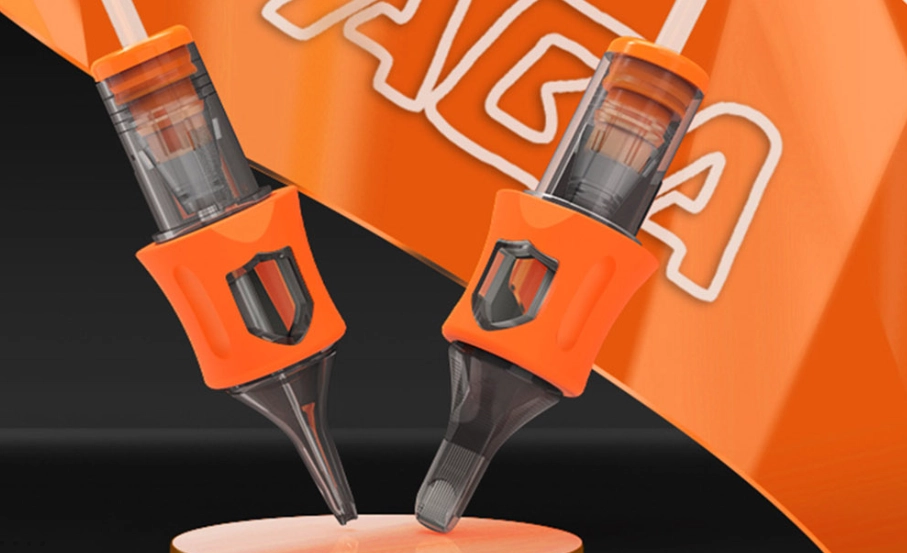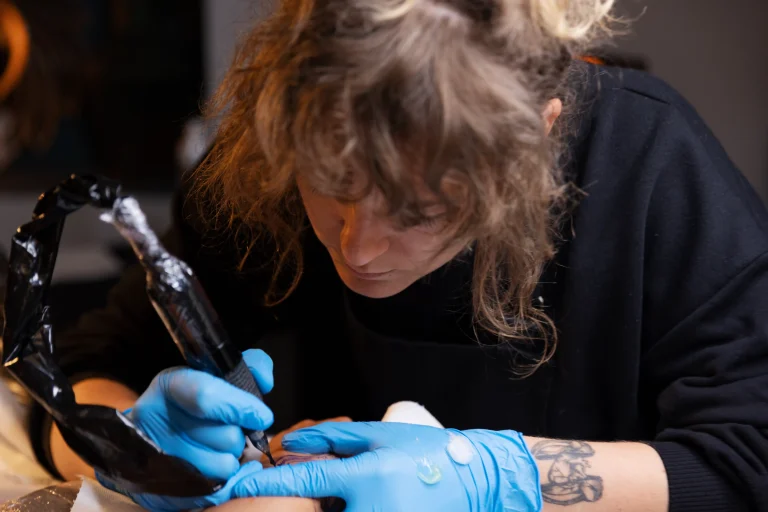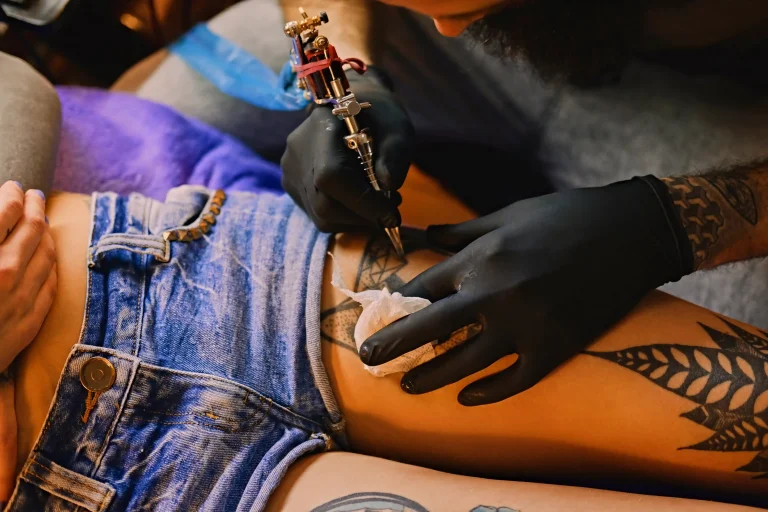Explore the contrasts between traditional machine tattoos and modern microneedle methods. Discover variations in discomfort, recovery processes, safety factors, and which approach best aligns with your creative vision.
Overview of Tattoo Techniques
Tattoo methods have advanced remarkably across cultures and time periods. From ancient hand-poking practices to contemporary machine techniques, each offers distinct artistic opportunities. Understanding these differences helps select the ideal style for your body art.
Traditional Tattoo Techniques: A Brief Explanation
Traditional tattooing has been practiced for centuries. It reflects cultural legacy and personal identity. This approach uses a tattoo machine or manual tools. They embed ink into the skin’s dermis layer. The process creates enduring designs. These range from tribal motifs to modern illustrative artwork.
Introduction to Microneedle Tattooing
Microneedle tattooing is a cutting-edge method. It involves ultra-fine needles that deposit pigment into the skin. As opposed to other procedures, this action is commonly directed towards cosmetic augmentations. A few examples include microblading eyebrows or scalp micropigmentation. It provides accuracy and refinement. It suits those seeking subtle improvements rather than striking artistic patterns.
Differences in Application Methods
How do microneedle tattoos differ from traditional tattoos? Let’s examine the distinctions.
The Process of Traditional Tattooing
When you choose a traditional tattoo, the artist uses a machine. It has needles that move quickly. They puncture the skin and deposit ink. This method supports vivid colors. It allows shading and detailed designs. The depth of needle penetration ensures the artwork remains visible over time. However, it makes the experience more invasive.
How Microneedle Tattoos Are Applied
Microneedle tattoos use specialized devices or handheld tools. These have fine needles. They place pigment closer to the skin’s surface. This differs from traditional tattoos. The technique is less disruptive. It’s often used for soft gradients or filling sparse areas. Examples include eyebrows or hairlines.
Pain and Healing Time Comparison
When selecting tattoo methods, discomfort and recovery duration are vital factors. Traditional machine tattoos and microneedle techniques vary greatly in these areas. Knowing these differences ensures a more pleasant experience.
Pain Levels in Traditional Tattoos
Discomfort during traditional tattooing depends on several elements. These include placement, size, and personal pain tolerance. Areas with thinner skin or more nerve endings are more sensitive. The repeated puncturing can cause unease. This is especially true during extended sessions.
Pain Experience with Microneedle Tattoos
Microneedle tattoos are typically less uncomfortable. Their shallow application and finer needles reduce pain. Many clients describe the sensation as gentle scratching. It’s not intense discomfort. This makes microneedle tattooing appealing. It suits those cautious about pain.
Healing Times: Traditional vs. Microneedle Tattoos
Traditional tattoos usually need 2-4 weeks for initial recovery. Full healing can take months. Deeper skin layers regenerate slowly. Scabbing and peeling are common during this time.
In contrast, microneedle tattoos heal more swiftly. They cause minimal skin trauma. Most people notice only slight redness or swelling. These fade within days.
Aesthetic Outcomes and Precision
The choice between microneedle and traditional tattoos greatly shapes visual results. Microneedles produce delicate, accurate artwork. Traditional methods deliver bold brilliance. Understanding these differences ensures your tattoo matches your creative goals perfectly.
Artistic Styles Achievable with Traditional Tattoos
Traditional tattooing excels at creating striking designs. It supports vibrant colors. No matter if you like black-and-grey realism or Japanese colorwork, this method is for varied styles. It is ideal for large pieces because it is versatile. These include sleeves or back tattoos.
Accuracy and Definition Provided by Microneedle Tattoos
Microneedle tattoos are experts at natural enhancements. They provide for extensive accuracy. From fine, feather-like strokes in microblading eyebrows to shading of scalp to resemble realism, the technique is about finesse. It is about detail, not about boldness. This makes it ideal for cosmetic enhancement and not about grand artwork.
Safety and Skin Effect
In learning about tattoo methods, safety and skin effect are critical considerations. Microneedle and conventional methods differ substantially in their influence on skin health, recovery, and long-term considerations.
Skin Penetration Depth: Conventional vs. Microneedle
Penetration depth is most significant for safety and for effect on the skin. In conventional tattooing, needles penetrate up to the dermis layer. They deposit ink there. The deeper penetrating makes permanent designs. It’s more invasive, though. The dermis contains blood vessels and nerve endings. This can cause bleeding and more discomfort upon application.
Microneedle tattooing uses ultra-thin needles. They find pigment closer to the skin surface. This shallow approach minimizes skin trauma. It reduces discomfort during the process. The lighter penetration also speeds up recovery. It’s a safer option for those with sensitive skin or worries about extended healing.
Risks and Side Effects Associated with Each Technique
Both traditional and microneedle tattooing carry risks. Their nature and severity vary due to differences in approach.
Traditional Tattoos:
- Infection Risks: Deeper penetration raises infection chances. This occurs if hygiene standards are not followed.
- Scarring: Poor application or ink allergies can lead to scarring.
- Pain and Bleeding: The invasive method often causes notable discomfort. Bleeding is common during sessions.
Microneedle Tattoos:
- Temporary Redness: Minimal trauma leads to mild side effects. These include slight redness or swelling.
- Pigment Fading: Shallow pigment placement may cause faster fading over time.
- Allergic Reactions: Though rare, some may react to cosmetic pigments.
Popular Uses and Trends
Tattoo trends shift continually. Traditional and microneedle techniques serve unique purposes. They range from bold declarations to subtle refinements. Explore their current applications.
Common Applications of Traditional Tattoos
Traditional tattoos are celebrated for their creative flexibility. They hold cultural meaning. People choose them for personal identity. They mark significant life moments or display intricate patterns. Common uses include:
- Cultural Symbols: Designs tied to heritage. Examples are tribal motifs or religious icons.
- Artistic Expression: Realism, abstract art, or illustrative styles. These require vivid colors and shading.
- Memorial Tattoos: Names, dates, or images honoring loved ones.
These tattoos appeal to those seeking permanent artwork. It serves as a personal declaration and identity marker.
Future Trends in Microneedle Tattooing
Microneedle tattooing is increasingly popular in cosmetic procedures. It’s also gaining new uses. Its precision and delicacy drive this. Some of the developing trends include:
- Eyebrow Microblading:Creating natural eyebrows with thin strokes. They resemble hair strands.
- Scalp Micropigmentation:It treats hair loss. It replicates hair follicles for a thicker look.
- Freckle Tattoos:Implantation of semi-permanent freckles for cosmetic attractiveness.
- Medical Uses:Covering scars or adding pigmentation for conditions like vitiligo.
This method attracts those seeking refinements. They blend seamlessly with natural features rather than bold declarations.
Yaba: A Trustworthy Supplier for Microneedle Equipment
For professionals diving into microneedle tattooing, choosing dependable tools is essential. Yaba stands out as a reliable provider. They offer premium tools designed for precision work. Their products use advanced technology. This ensures safety and efficiency during procedures.
Yaba provides:
- Specialized Tools: Devices crafted for cosmetic uses. Examples include microblading or scalp micropigmentation.
- Durable Materials: High-grade needles. They maintain sharpness for consistent outcomes.
- Customer Support: Thorough guidance on product use and care.
Choosing Yaba enhances your practice. It ensures client satisfaction through dependable performance.
Frequently Asked Questions (FAQs)
What Is the Main Difference Between Microneedle and Traditional Tattoos?
The main difference is needle penetration depth. Traditional tattoos place ink in the dermis layer. This ensures permanence. Microneedle tattoos place pigment near the surface. This allows for subtlety along with faster healing.
Are Microneedle Tattoos Suitable for All Skin Types?
Yes, microneedle tattoos are safe for all skin types. Their non-invasive approach is suitable for most people. People with certain skin conditions, though, must consult an expert before getting them.
How Long Do Microneedle Tattoos Typically Last?
Microneedle tattoos are semi-permanent. They may last from 1-3 years. This depends on skin type, aftercare, and exposure to the sun. Touch-ups may be required from time to time to make them last longer.









